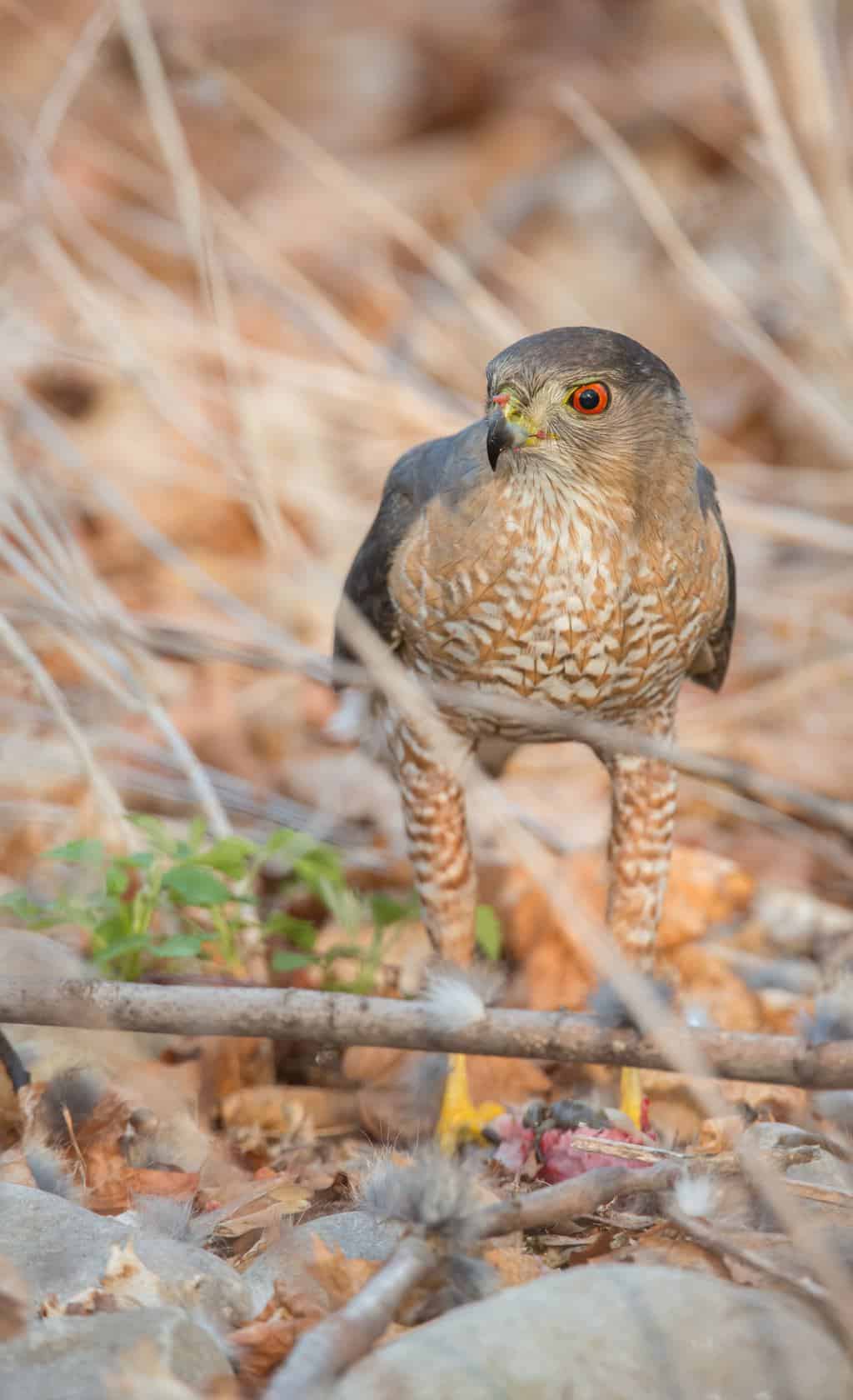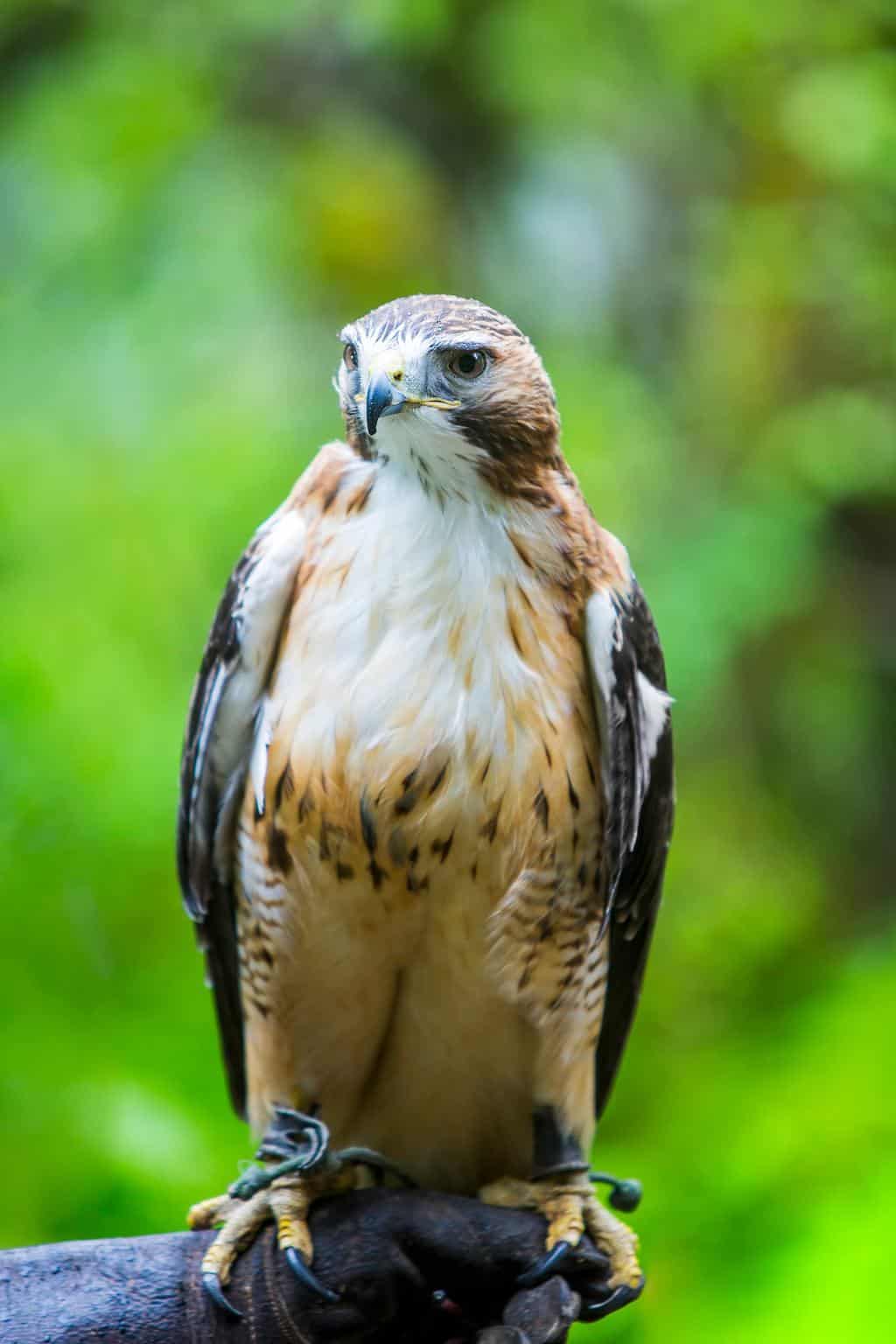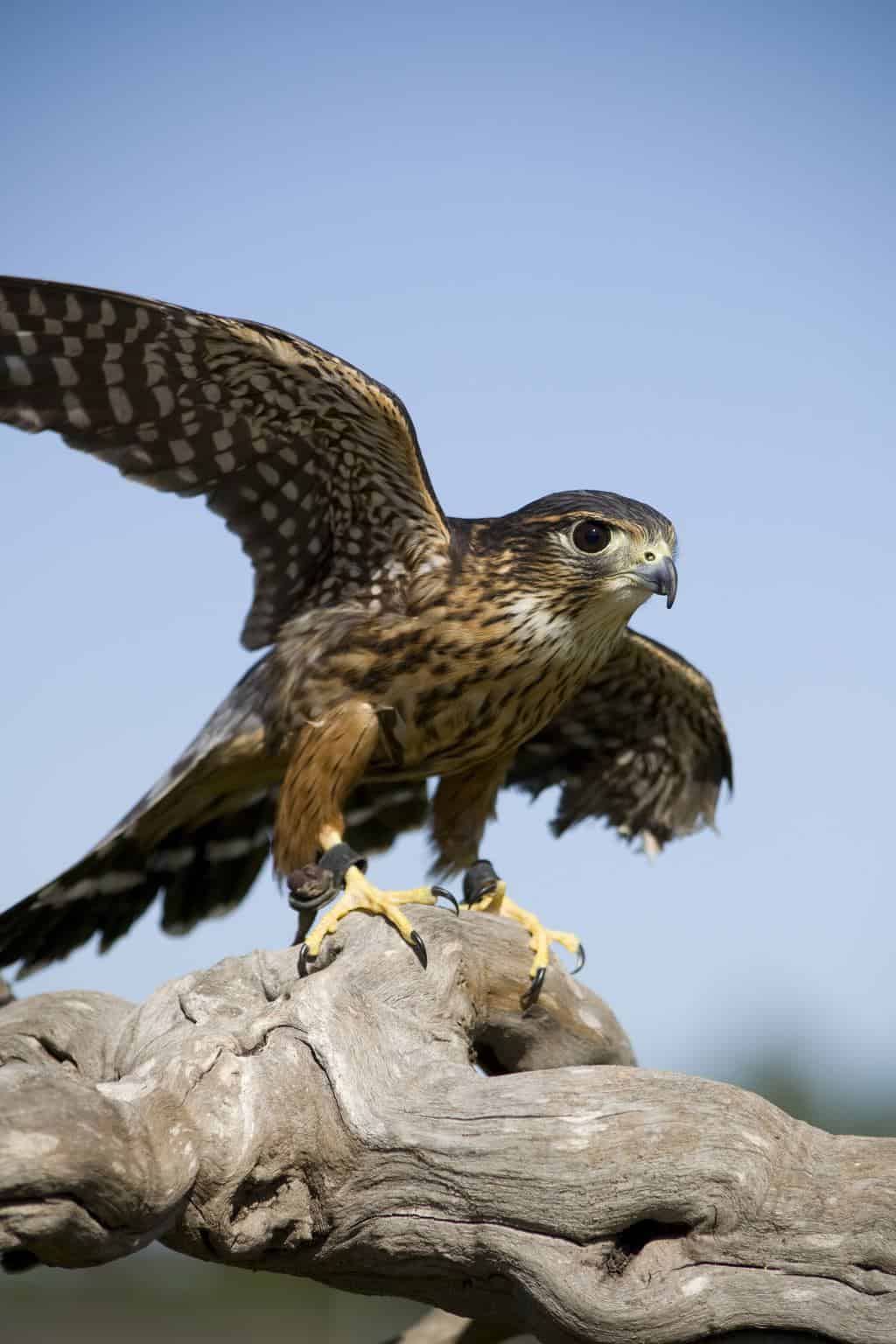Montana is famous for being a large habitat for wildlife in the United States. The city is the 4th biggest state in the U.S. but ranks 43rd in terms of population, giving the wildlife a generous space to inhabit.
With all this space available for animals to occupy, Montana houses more than 400 species of birds. This includes ten different species of our favorite birds of prey: hawks. Though there are more than 200 species of hawks around the world, you’ll only find ten in Montana.
Hawks differ in shapes and sizes, and identifying them can be tricky. That said, we’re going to shed light on the ten different hawk species in Montana so they’re easier for you to identify. The different species of hawks can be divided into two groups: the accipiters, who prey mainly on other birds, and the buteos that look more like eagles but are smaller in size.
Broad-Winged Hawk

-
Scientific Name: Buteo platypterus
-
Length: 13.4-17.4 inches
-
Weight: 9.3-19.8 ounces
-
Wingspan: 31.9-39.4 inches
The broad-winged hawk is a small bird of prey with a large head, square tail, chunky body, and of course, broad wings. Adults of this species have reddish-brown feathers on their heads and black and white tails, while juveniles of the species have lighter brown heads.
You’ll find these smaller-sized hawks in forests and, when traveling, in big flocks of called kettles. They migrate from Canada to South America, so if you’re in Montana in the fall, you’ll catch these beautiful birds as they’re heading south.
This bird isn’t too picky and has a varied diet, eating small mammals, amphibians, reptiles, and other birds.
Cooper’s Hawk

-
Scientific Name: Accipiter cooperii
-
Length: 14.6-17.7 inches
-
Weight: 7.8-24.0 ounces
-
Wingspan: 24.4-35.4 inches
In general, Cooper’s hawk is about the size of a crow, and females of this species are bigger than males. Adult Cooper’s hawks have greyish heads and orange-reddish eyes, while juveniles have brown heads. These medium-sized birds have a classic accipiter look: rounded wings and a long tail.
Cooper’s hawks breed in Montana during spring and summer before heading to the south in winter. You can find this bird in basically any place that has trees, from forests to backyards.
Sharp-Shinned Hawk

-
Scientific Name: Accipiter striatus
-
Length: 9.4-13.4 inches
-
Weight: 3.1-7.7 ounces
-
Wingspan: 16.9-22.1 inches
The sharp-shinned hawk is the smallest type of hawk in the United States and Canada. This bird can be identified by its long legs and tail and its short, rounded wings. The heads of adult sharp-shinned hawks are blue-grey, and those of juveniles are brown.
Sharp-shinned hawks usually live in forests, but may come to hunt for other birds that might visit your backyard bird feeders. If this predatory bird shows up in your yard, take down the feeder and stop feeding the songbirds for a few weeks until all the sharpies are gone. Check out this article for more help.
Some sharp-shinned hawks migrate to northeast Montana while other breed and live permanently in the western and central parts of the state.
Ferruginous Hawk

-
Scientific Name: Buteo regalis
-
Length: 22.1-27.2 inches
-
Weight: 34.5-73.2 ounces
-
Wingspan: 52.4-55.9 inches
Ferruginous hawks are the hawk family’s largest birds found in North America. They’re characterized by white underparts, grey heads, and ferruginous legs. These bold birds occur in two color morphs: dark, which are more reddish-brown, and light, who sport white underparts and rust-colored legs.
Some ferruginous hawks go to eastern and central Montana to breed only. They prefer open spaces, so you’ll most probably find them in deserts and prairies.
When it’s time to eat, ferruginous hawks mostly eat small to medium-sized mammals, including jackrabbits, gophers, squirrels, and kangaroo rats.
Red-Tailed Hawk

-
Scientific Name: Buteo jamaicensis
-
Length: 17.7-25.6 inches
-
Weight: 31.8-51.5 ounces
-
Wingspan: 44.9-52.4 inches
As you probably already guessed, the red-tailed hawk’s red tail feathers are what gave the bird its name, but beyond that characteristic, you can identify this bird by its rich brown head and pale undersides. Juveniles are even more distinctive with their brown-banded tails.
As North America’s second-largest species of hawks, it’s no surprise that these widespread birds can be spotted in Montana. Some come to the state to breed, while others take permanent residence in the western part of the state.
Much like ferruginous hawks, red-tailed hawks like to fly over wide, open fields, but you can also find them perched on top of fence posts or phone poles.
Red-Shouldered Hawk

-
Scientific Name: Buteo lineatus
-
Length: 16.9-24.0 inches
-
Weight: 17.1-27.3 ounces
-
Wingspan: 37.0-47.3 inches
Red-shouldered hawks are clothed in white and black feathers and have distinct reddish breasts. Juveniles of this species are brown at the top with white and brown bottoms.
You won’t often find red-shouldered hawks in Montana, but sometimes they accidentally migrate in Montana in spring and fall. If this happens to be the case, they’ll most likely stay hidden in forests.
For the most part, the red-shouldered bird’s diet isn’t too different from other hawk species, except for the fact that their food choices vary depending on where they are and the time of year. Though small mammals make up the majority of their diet, they’ll also eat things like fish, small birds, and large insects if they’re readily available.
Swainson’s Hawk

-
Scientific Name: Buteo swainsoni
-
Length: 18.9-22.1 inches
-
Weight: 24.4-48.2 ounces
-
Wingspan: 45-56 inches
Swainson’s hawks are larger birds who generally sport grey or brown heads, light-colored bellies, and narrow wings that are covered in black and white feathers. Dark morphs of this species, however, might be so dark they appear black.
Swainson’s hawks often breed in Montana, and when it’s time to migrate, they make the long journey from Alaska to Argentina. They travel in large groups, and you’ll likely find them in wide fields on utility poles, fence posts, or even on the ground.
Because they’re highly social, it’s not uncommon to see large flocks of these birds fluttering about during their non-breeding seasons.
Rough-Legged Hawk

-
Scientific Name: Buteo lagopus
-
Length: 18.5-20.5 inches
-
Weight: 25.2-49.4 ounces
-
Wingspan: 52.0-54.3 inches
Though rough-legged hawks don’t breed in Montana, you can see them in the winter while they’re migrating. You’ll find them mostly in open spaces, like prairies, and perched atop telephone poles.
Like several other hawks, this species occurs in two different morphs. Light morphs of the rough-legged hawk have white heads, dark bellies, white underwings, and white and dark tail feathers. Dark morphs, on the other hand, are usually dark brown with white-edged wings.
This is the only buteo bird who’s attracted to cold temperatures, nesting mostly in the arctic tundra regions. Fully-feathered legs not only give these amazing birds their name, but they also keep them warm in frigid weather.
Northern Harrier

-
Scientific Name: Buteo lagopus
-
Length: 18.1-19.7 inches
-
Weight: 10.6-26.5 ounces
-
Wingspan: 40.2-46.5 inches
Identify North America’s only harrier species, the northern harrier, by their grey heads, white underparts, and dark-edged wings. Juveniles and females, however, are usually browner than grey and white, so keep that in mind as you search for them on your next birdwatching expedition. These birds are also distinctly slim with long tails and wings.
These hawks breed in eastern and central Montana, but you’ll find some of them living in western Montana all year. They quarter low over fields and marshes to hunt for small mammals and birds, and they feed on the ground.
Thanks to their round faces, harriers look a lot like owls, so be careful not to confuse the two species.
Northern Goshawk

-
Scientific Name: Accipiter gentilis
-
Length: 20.9-25.2 inches
-
Weight: 22.3-48.1 ounces
-
Wingspan: 40.5-46.1 inches
Northern goshawks are the largest of the North American accipiters. These birds are like the older, more aggressive cousin of sharp-shinned and Cooper’s hawks, and their heads are dark grey, undersides are grey barred, and their eyes are orange-red surrounded by a white stripe. Juveniles’ heads are brown with yellow eyes.
Northern goshawks are spread across Montana. You’ll most probably find these elusive birds in forests and secluded areas, using their fast-flying abilities to scoop up an unsuspecting small bird, squirrel, or snake.
Conclusion
With ten different species scattered all around Montana, your chances of seeing a hawk here are high. And since Montana houses many other bird species, you’ll have a lot to see on your birdwatching excursion. And if you find woodpeckers interesting, you’re in luck; there are plenty of those to be found in Montana, too!

